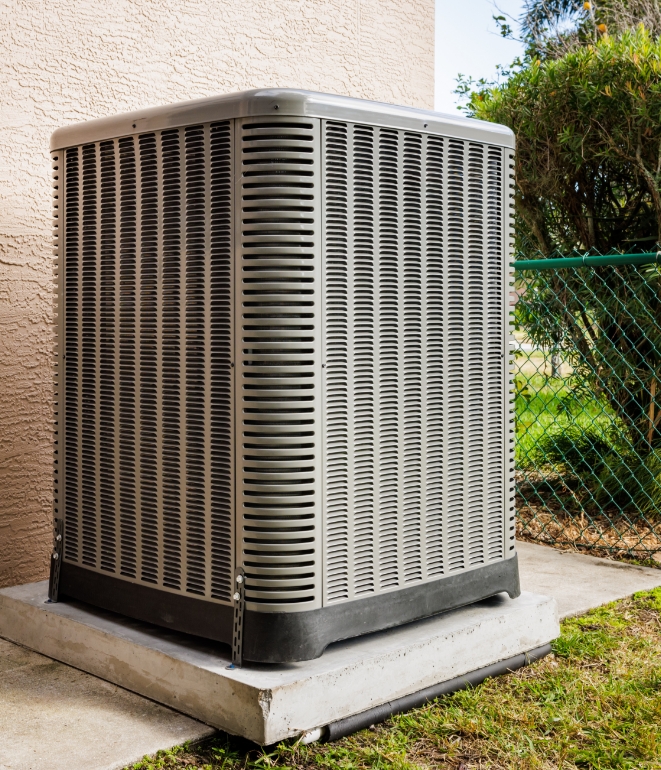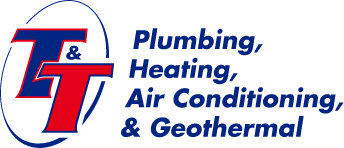Storm Prep for Your HVAC System: What Every Garrett Resident Should Know

Before storms roll through Garrett, Indiana, most homeowners think about stocking up on batteries, protecting windows, and making sure their sump pump is working. But one system that often gets overlooked is your heating and cooling equipment.
Your HVAC system is one of the most expensive and essential pieces of equipment in your home, and it can be extremely vulnerable to damage during severe weather. Proactive HVAC storm prep can save you from costly repairs and keep your family safe and comfortable.
In this guide, T&T Plumbing & Heating, Inc. explains the most common storm patterns in Garrett, the risks these storms pose to your HVAC system, and the best steps you can take to prevent or minimize damage.
Storm Season in Garrett, IN
Weather in Northeast Indiana can be unpredictable and severe. Garrett, IN, residents experience a wide range of storm threats throughout the year. Knowing when storms are most likely helps Garrett homeowners plan their HVAC storm prep before disaster strikes.
Spring and Summer Thunderstorms
From April through August, Garrett frequently sees heavy thunderstorms with high winds, lightning, and torrential rain. These systems can bring short but intense downpours that overwhelm drainage around homes, leaving HVAC units sitting in standing water. For outdoor units, high winds pose the threat of debris damage. Power surges from lightning strikes are also common and can fry sensitive electrical components inside your equipment.
Tornado Season
Indiana lies in a tornado-prone region, and late spring into early summer is when the risk is highest. Even if a tornado doesn’t touch down in Garrett itself, the severe wind gusts associated with tornado-producing storms can scatter debris across yards. Outdoor HVAC units are vulnerable to dents, bent fins, or even disconnected wiring from this flying debris.
Tropical Storm Remnants
While Garrett doesn’t experience direct hurricanes, tropical storms from the Gulf and Atlantic often travel inland and lose strength by the time they reach Indiana. Even in their weakened state, they can bring days of steady rainfall, flash flooding, and saturated ground conditions that place extra stress on outdoor HVAC equipment. Long-lasting moisture exposure can accelerate rust and shorten the lifespan of your system.
Fall Transitions
September and October can bring lingering storms, with strong winds and unpredictable temperature swings that strain HVAC systems. This transitional season often leads to clogged outdoor coils and vents as falling leaves accumulate around equipment. If not cleared, this debris can trap moisture, encourage mold growth, and block essential airflow.
Winter Storms
Snow and ice storms hit the area between December and February, often dropping several inches at a time. The combination of freezing rain and snow can create thick ice layers around HVAC systems, restricting airflow and overworking fans. Prolonged power outages during cold snaps also force heating systems to work harder once electricity is restored, which increases wear and tear on vital components.
Steps to Protect Your HVAC System Before a Storm
Proper planning goes a long way in reducing storm-related risks. Here are the most effective strategies to prepare your HVAC equipment and reduce the risk of major storm damage:
1. Secure Outdoor Units
Anchor your outdoor air conditioning condenser or heat pump securely to its base. Strong winds can shift equipment, damage refrigerant lines, or cause leaks. If your system isn’t already mounted on a concrete pad, consider having one installed for added stability.
2. Clear Surrounding Debris
Branches, toys, lawn furniture, and other loose items become projectiles during storms. Part of your HVAC storm prep should include clearing a five-foot radius around your outdoor unit to reduce the risk of impact damage.
3. Elevate the Unit if Flooding Is a Risk
If your home sits in a low-lying area prone to water pooling, talk to T&T Plumbing & Heating, Inc. about raising your outdoor unit. Elevation helps prevent water damage to electrical components.
4. Invest in a Surge Protector
Lightning strikes and power surges are common during Garrett thunderstorms. A whole-house surge protector or one dedicated to your HVAC system can safeguard the delicate electronics inside your unit.
5. Shut Off the System During Severe Weather
If a severe storm is imminent, turn off your HVAC system at the thermostat and breaker. This reduces the risk of electrical overload and helps protect your compressor from power spikes.
What to Do After the Storm Passes
Once the skies clear, it’s tempting to flip your HVAC system back on immediately. However, taking a few extra steps can prevent long-term damage:
- Inspect for Visible Damage: Look for dents, disconnected wires, or debris lodged in the outdoor AC unit. If anything seems off, don’t attempt to run it.
- Check for Flooding: If water has pooled around the base of your air conditioner or heat pump, wait until it’s completely dry before restarting. Running the system while wet can cause serious electrical issues.
- Reset Power Safely: If you shut the system off before the storm, wait a few minutes before powering it back on to allow the compressor to reset.
- Listen and Smell: Unusual noises, burning odors, or weak airflow can indicate hidden damage. Shut the system down and call T&T Plumbing & Heating, Inc. for professional evaluation.
Even if everything seems to be running normally, it’s a smart idea to schedule a professional HVAC inspection after a major storm. Not all damage is visible, and small issues like a stressed compressor, bent fins, or hidden electrical shorts, can worsen over time and lead to costly breakdowns.
A trained technician from T&T Plumbing & Heating, Inc. can perform a thorough post-storm checkup, confirm your system is safe to operate, and recommend any necessary HVAC repairs to keep your equipment reliable for the seasons ahead.
Long-Term HVAC Storm Prep Strategies
Storm preparation isn’t just about what you do the day before bad weather—it’s about building resilience into your HVAC system year-round. Taking proactive steps now means that when the next thunderstorm, winter freeze, or tropical storm remnant passes through Garrett, your equipment is ready to handle the stress.
- Routine HVAC Maintenance: Schedule seasonal tune ups with T&T Plumbing & Heating, Inc. to make sure your system is ready for unexpected weather. A well-maintained HVAC unit is less likely to fail during stress conditions.
- Backup Power Solutions: A standby generator can keep your HVAC system running during extended outages, protecting your family’s comfort and preventing frozen pipes in winter.
- Smart Thermostat Alerts: Some modern thermostats can send alerts if your system shuts down during a storm, giving you peace of mind even when you’re away.
- Homeowner’s Insurance Review: Make sure your policy covers HVAC storm damage from issues such as flooding, power surges, and flying debris. Understanding your coverage before a storm saves you from unnecessary stress later.
By investing in long-term strategies that benefit HVAC storm prep, you can reduce the risk of unexpected breakdowns, extend the lifespan of your system, and enjoy greater peace of mind no matter the forecast.
Protect Your HVAC System Before the Next Storm Hits
Storms in Garrett are a fact of life, but major damage to your HVAC system doesn’t have to be. By understanding local weather risks and following a thorough HVAC storm prep checklist, you can keep your equipment safe, extend its lifespan, and avoid costly repairs. From pre-storm preparation to post-storm inspections, a little planning goes a long way toward protecting your investment and your family’s comfort.
T&T Plumbing & Heating, Inc. provides the maintenance, upgrades, and emergency support that keep your system safe during severe weather. From installing surge protection to elevating outdoor units, performing seasonal tune ups, and offering prompt repairs after a storm, our team helps Garrett homeowners protect their comfort and avoid costly surprises. Contact us today to schedule service.
